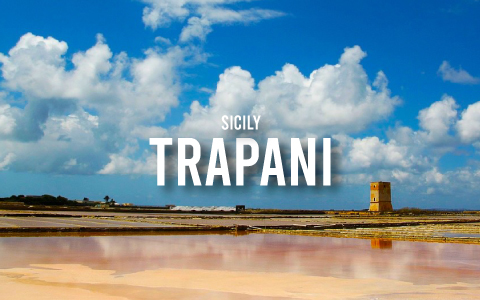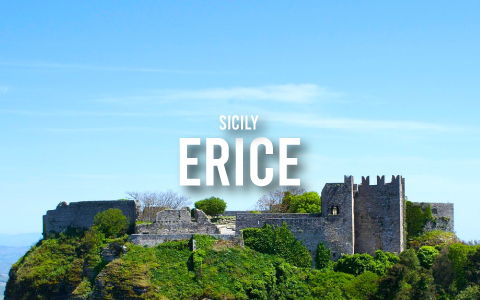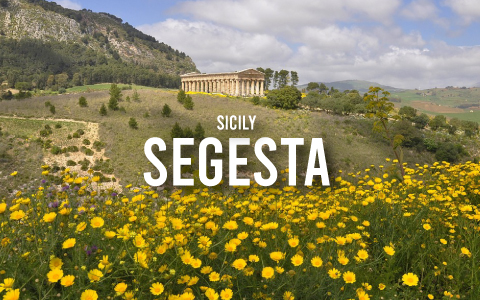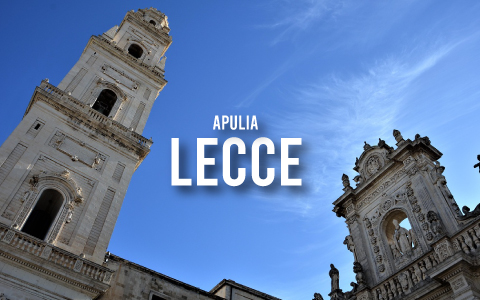
Trapani, the Gateway to Western Sicily
Sicily, the largest island in the Mediterranean, is a land where history, culture, and natural beauty intertwine in a dazzling mosaic. From ancient Greek temples to baroque cities, from volcanic landscapes to golden beaches, Sicily offers an unparalleled variety of experiences. Along its western coast lies Trapani, a city that often goes unnoticed compared to Palermo or Catania, yet charms visitors with its maritime heritage, salt pans, and strategic position between the Tyrrhenian and Mediterranean Seas.
A Brief History of Trapani
Trapani’s origins date back to antiquity. According to legend, the city’s name derives from the Greek word drepanon, meaning “sickle,” in reference to the curved shape of its coastline. Founded by the Elymians as the port for the nearby ancient city of Erice, Trapani grew under the Phoenicians and later flourished under Carthaginian rule.
The city played a crucial role during the Punic Wars, when it became a strategic naval base for Carthage in its struggle against Rome. After the Roman conquest, Trapani continued to thrive as a maritime hub. Throughout the Middle Ages, the Arabs, Normans, and Spanish each left their mark on its architecture, culture, and cuisine. By the Renaissance, Trapani was already famous for its salt production and coral craftsmanship—two traditions that still define its identity today.
Why Visit Trapani?
Known as the “City of Two Seas,” Trapani is both a living port and a cultural treasure. It offers a blend of history, culture, and seaside charm. The city serves as both a fascinating destination in its own right and a convenient base for exploring western Sicily.
The Historic Center of Trapani
Trapani’s historic center stretches along a narrow peninsula, surrounded by the sea on both sides. Wandering its streets reveals a mix of baroque and neoclassical architecture, elegant squares, and lively markets.
Via Garibaldi and Corso Vittorio Emanuele, the city’s main arteries, are lined with cafés, restaurants, and boutiques. Landmarks include the Cathedral of San Lorenzo and the Church of the Purgatory, which houses the famous “Misteri,” wooden sculptures carried in the city’s renowned Good Friday procession.
The Salt Pans and Windmills
One of Trapani’s most distinctive sights lies just outside the city: the salt pans of Trapani and Paceco. These shallow pools, framed by picturesque windmills, have been used for salt production since Phoenician times. Today, they form part of a nature reserve where visitors can learn about traditional salt harvesting and observe migratory birds, including flamingos. At sunset, the reflections of the sky on the salt pans create an unforgettable spectacle.
Erice
Perched on a mountain above Trapani, the medieval town of Erice is a must-visit. Accessible by cable car or winding road, Erice enchants with its cobbled streets, stone houses, and panoramic views of the coast and the Egadi Islands. Highlights include the 12th-century Norman castle, the Church of San Giovanni, and the town’s famous pastry shops, where traditional almond sweets are still prepared according to centuries-old recipes.
The Ligny Tower
At the tip of Trapani’s old town stands the Ligny Tower, a 17th-century coastal watchtower built under Spanish rule to defend against pirate attacks. Today, it houses a small archaeological museum displaying artifacts from the sea, including Punic amphorae and relics from local shipwrecks. The tower’s terrace also offers one of the best viewpoints in the city, with sweeping vistas over both the Tyrrhenian and Mediterranean Seas.
The Regional Museum Pepoli
For art and history enthusiasts, the Regional Museum Agostino Pepoli is an essential stop. Housed in a former Carmelite monastery, the museum displays a remarkable collection of coral jewelry, baroque art, medieval sculptures, and decorative arts that showcase Trapani’s cultural heritage. It’s particularly renowned for its coral craftsmanship, a tradition that made Trapani famous throughout Europe.
Beaches Near Trapani
While Trapani itself is more of a port city, several beautiful beaches are located nearby. San Giuliano Beach, just outside the center, offers sandy shores and clear waters perfect for swimming. For those willing to venture a bit further, the pristine coastline of San Vito Lo Capo and the Zingaro Nature Reserve are within easy reach, offering some of the most spectacular beaches in Sicily.
The Egadi Islands
Just a short ferry ride from Trapani’s port, the Egadi Islands—Favignana, Levanzo, and Marettimo—offer a paradise of crystal-clear waters, hidden coves, and laid-back fishing villages.
Favignana, the largest, is famous for its former tuna processing plant and turquoise beaches, while Levanzo is ideal for hiking and visiting prehistoric cave paintings. Marettimo, the most remote, appeals to those seeking unspoiled nature and tranquility.
The Processione dei Misteri
Trapani is also famous for its Holy Week traditions, particularly the Processione dei Misteri. This Good Friday procession, one of the oldest and longest religious events in Italy, lasts 24 hours and features twenty wooden statues depicting scenes from the Passion of Christ. It is both a religious ceremony and a cultural event that brings the entire city to life, making it a unique experience for visitors.
Food and Wine
Trapani is also a gastronomic destination. Its cuisine reflects a fusion of cultures, with Arab, Spanish, and Sicilian influences. Local specialties include couscous di pesce (fish couscous), pasta con pesto alla trapanese (a tomato, almond, and basil pesto), and fresh seafood dishes. The area is also known for Marsala wine, produced nearby, which pairs perfectly with the region’s rich culinary traditions.
Location and How to Get There
Trapani is located on the western tip of Sicily, about 100 kilometers from Palermo. Its strategic position makes it easily accessible by air, sea, and land.
Trapani-Birgi Airport (officially Vincenzo Florio Airport) offers domestic flights and connections to several European cities, particularly during the summer. Palermo’s Falcone-Borsellino Airport is another option, about an hour and a half away by car.
For those traveling by sea, ferries connect the port of Trapani with the Egadi Islands, Pantelleria, and even Tunisia. Once in the city, the historic center is best explored on foot, while taxis and rental cars provide convenient access to nearby attractions.



